MAHARANA PRATAP
Mewar 's Rebel King
Copyright Brishti Bandyopadhyay 2007
Published 2007 by

7/16, Ansari Road, Daryaganj,
New Delhi 110 002
Sales Centres:
Allahabad Bangalore Chandigarh Chennai Hyderabad Jaipur Kathmandu Kolkata Mumbai Pune
All rights reserved.
No part of this publication may be reproduced, stored in a retrieval system, or transmitted, in any form or by any means, electronic, mechanical, photocopying, recording or otherwise, without the prior permission of the copyright publishers.
Printed in India by
Saurabh Printers Pvt. Ltd.
A-16 Sector-IV
Noida 201 301
CONTENTS
THE MEWAR TRADITION
 ver 400 years ago, when the glory of the Mughal Empire under Akbar was at its height, a battle was fought near the village of Haldighati in Rajasthan. The mighty Mughal war machine faced the army of the Sisodias of Mewar, a Rajput clan. The Mughals won the battle after a hard-won fight but Rana Pratap, the Mewar King who led the army on the Rajput side, managed to escape. And, for the remaining years of his life, he played a cat and mouse game of great inventiveness with Akbar's armies. It made the most powerful monarch of the world vow to use all the resources at his disposal to destroy Rana Pratap. Akbar failed. And, Mewar was the only Rajput kingdom during his reign, to remain free of Mughal domination.
ver 400 years ago, when the glory of the Mughal Empire under Akbar was at its height, a battle was fought near the village of Haldighati in Rajasthan. The mighty Mughal war machine faced the army of the Sisodias of Mewar, a Rajput clan. The Mughals won the battle after a hard-won fight but Rana Pratap, the Mewar King who led the army on the Rajput side, managed to escape. And, for the remaining years of his life, he played a cat and mouse game of great inventiveness with Akbar's armies. It made the most powerful monarch of the world vow to use all the resources at his disposal to destroy Rana Pratap. Akbar failed. And, Mewar was the only Rajput kingdom during his reign, to remain free of Mughal domination.
The Rajput clans owed their origins to foreign races like the Hunas and the Sakas. These foreign invaders arrived in India towards the end of the powerful Gupta dynasty, picked up Indian customs, cultures and modes and marrying locals, merged into the mainstream. They adopted the martial caste of the Kshatriyas as their own and came to be known for their willingness to risk everything, including their lives, for the sake of honour. They were almost always at war with each other or with invading armies from across the Himalayas.
The land, which the Rajputs occupied in northern India, had something to do with the way their personalities were shaped. It came to be known after themRajasthanor the 'abode of the princes'. The Rajasthani terrain offers very little by way of princely comforts, though. The Thar desert lies in the west-stretches upon stretches of golden sand on which beats a relentless sun. The cultivated plains lie in the northeast and the prosperous plateau in the south-west. The Aravalli range of hills stretches from the north to the south-east. At Chittorgarh, Jodhpur and Alwar, the Rajputs dotted the arid, hilly Aravalli landscape with some of the most imposing and magnificent forts and palaces in the world. The hill forts offered superb facilities for military protection against attacks and provided strongholds for organising defence. The desert helped the Rajputs to hold their own against invaders.
Of all the Rajput kingdoms, Mewar was the most isolated. The Aravallis acted as a barrier, sealing-off Mewar from the rest of Rajasthan.
In ancient times, Mewar was known as Medpat, The word is said to be connected with Maurya (or More), the Paramara Rajput family, which is the earliest known dynasty to rule in the region. Mewar was the largest kingdom of Rajputana. The hilly regions of the Mewar kingdom were inhabited by the Bhil tribes and the plains by the agricultural communities. Several streams flowing from the hills made the plains fit for agriculture, which served as a granary in times of crisis.
Its geographical seclusion, rugged terrain and harsh physical surroundings made the people of Mewar self-reliant, defensively war-like and stubborn. It also made them develop an intense desire to preserve the glory of their ancestors and their clan, at any cost. They were prepared, mentally and physically, for the kind of protracted hide-and-seek warfare that Rana Pratap would adopt to elude the grasp of a superior Mughal army.
Pratap belonged to an illustrious dynasty that included many legendary personalities. The Rajputs were great fabulists, who loved to invent elaborate myths about their families. Pratap's clan traced its pedigree from mythological times as the descendents of Surya, the Sun God. In reality though, it was Bappa Rawal of the Guhilot Dynasty who in AD 734, established his capital at Chittor and proclaimed himself the ruler of Mewar. The family name changed to Sisodia when Maharana Hamir Singh I from Sisodia mounted the throne.
The Guhilot clan came to Rajasthan from Gujarat and settled down in the south-western part. They established a stable regime for the next eight centuries and offered resistance to the invading Turks. Jaitra Singh, who ruled from 1213-61, made Chittor the seat of the Mewar government. Chittor was one of the most contested seats of power in India. It is famous in the annals of the Mewar Dynasty as its first capital, and renowned in India as a centre of resistance. The invincible fortress city can be approached only through seven gates of which the top-most was the Ram Pol on the west. Many tanks, constructed on the slopes, assured a permanent supply of water.
The magnificent Chittorgarh fort, crowning a rocky hill, stands near the bank of the river Gambhiri. The length of the fort is about three miles and a quarter and its breadth is a maximum of half a mile. Earlier known as Chitra Durga or Chitrakuta, the fort is believed to have been built by the Rajput Maurya Dynasty in the 7th century AD. It was then named as Chitrakut after Chitrang Mori, a Rajput chieftain as inscribed on ancient Mewari coins. Traditional accounts say that the Mori Dynasty was in possession of the fort when Bappa Rawal seized it in AD 734. Renowned for its strength, the fort was, 'within the grasp of no foe, nor can the vassals of its chief know the sentiment of fear ... so intricate are its paths of ascent, that though you might find entrance, there would be no hope of return.'
Being the most important bastion of Rajput power, the occupation of Chittorgarh fort was the primary objective of anyone who wished to establish their rule over Rajasthan. The Rajputs used it as a base to offer a prolonged and determined resistance against invaders from Afghanistan, the Delhi Sultanates and the Mughal Empire. Of the three ferocious sieges that took place for possession of the fort, the first one occurred in AD 1303. The romantic legend of Rani Padmini is linked with this siege.
Padmini was the beautiful princess from Sinhala Dwipa (Sri Lanka), the daughter of King Gandharvasen and Queen Champawati. She came to India to marry the then ruler of Mewar, Rana Ratan Singh. When Sultan Alauddin Khalji of the Khalji Dynasty ruling North India heard about Padmini, he decided to abduct her for his harem. He was also very keen to add Mewar to his empire. He began an attack of the Chittorgarh fort in AD 1302. But after eight months of trying and failing to capture the fort, Alauddin offered to lift the siege on the condition that he be allowed to gaze at Padmini once. Ratan Singh agreed reluctantly. But Rajputs, like Mughals, kept their womenfolk in strict purdah. This meant that Rajput women were kept in seclusion and no outside male was allowed to gaze directly upon them. So, the Khalji sultan had to be satisfied with seeing Padmini's reflection in a mirror in the queen's summer palace. She appeared on the steps of a pavilion in the middle of a lotus pool just across from the palace.
While the Rana was accompanying the Sultan back to the main gates, the perfidious Alauddin offered many apologies for the trouble he had caused. All the while, his soldiers were waiting in ambush just outside the fort's gates. As the huge wooden portals were dragged open, and the Rana was about to bid his adversary a final farewell, the Khalji soldiers pounced upon Ratan Singh and captured him. As ransom for the king, Alauddin demanded that Padmini be turned over to him.

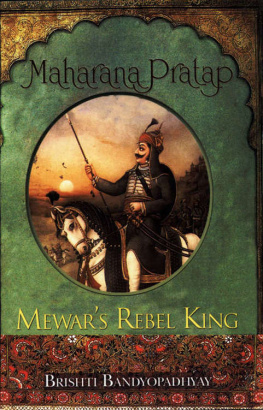

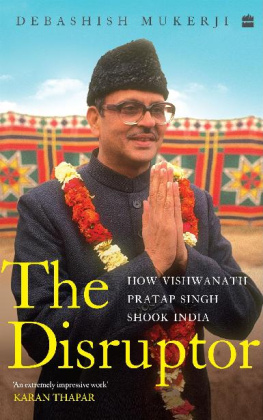
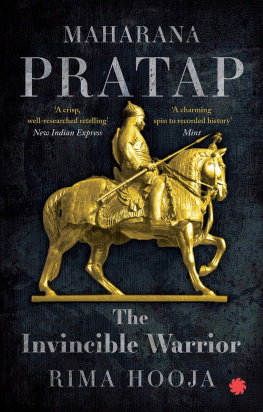

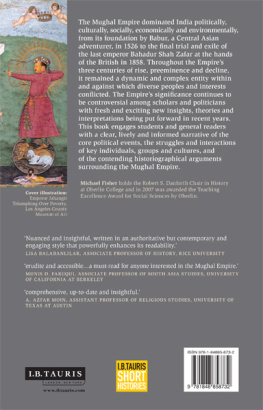


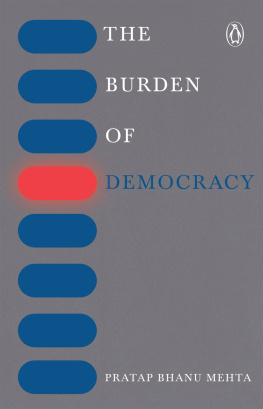
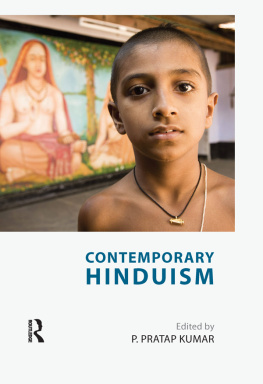



 ver 400 years ago, when the glory of the Mughal Empire under Akbar was at its height, a battle was fought near the village of Haldighati in Rajasthan. The mighty Mughal war machine faced the army of the Sisodias of Mewar, a Rajput clan. The Mughals won the battle after a hard-won fight but Rana Pratap, the Mewar King who led the army on the Rajput side, managed to escape. And, for the remaining years of his life, he played a cat and mouse game of great inventiveness with Akbar's armies. It made the most powerful monarch of the world vow to use all the resources at his disposal to destroy Rana Pratap. Akbar failed. And, Mewar was the only Rajput kingdom during his reign, to remain free of Mughal domination.
ver 400 years ago, when the glory of the Mughal Empire under Akbar was at its height, a battle was fought near the village of Haldighati in Rajasthan. The mighty Mughal war machine faced the army of the Sisodias of Mewar, a Rajput clan. The Mughals won the battle after a hard-won fight but Rana Pratap, the Mewar King who led the army on the Rajput side, managed to escape. And, for the remaining years of his life, he played a cat and mouse game of great inventiveness with Akbar's armies. It made the most powerful monarch of the world vow to use all the resources at his disposal to destroy Rana Pratap. Akbar failed. And, Mewar was the only Rajput kingdom during his reign, to remain free of Mughal domination.